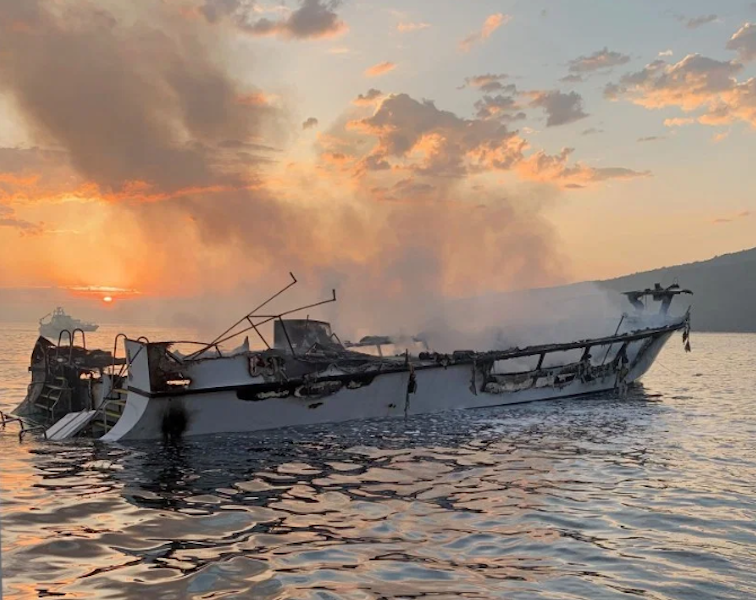Three years after the fire aboard the Conception dive boat, more progress is needed on the safety recommendations the National Transportation Safety Board (NTSB) issued as a result of the investigation.
The Conception was anchored in Platts Harbor, off Santa Cruz Island, Calif., when it caught fire in the early morning of Sept. 2, 2019. The vessel burned to the waterline and sank less than 100' from shore. Tragically, the 34 people asleep below deck were trapped in the bunk room: 33 passengers and one crew member lost their lives.
Following the investigation, the NTSB issued 10 new safety recommendations: seven to the U.S. Coast Guard, two to associations that have members operating small passenger vessels with overnight accommodations, and one to Truth Aquatics Inc., the operator of the vessel. The NTSB also reiterated its 2005 recommendation for the Coast Guard to require all U.S.-flag passenger vessels to implement a safety management system. Since 2005, the NTSB has investigated four passenger vessel accidents, including the Conception, where the lack of an SMS was an issue.
“Three years ago, I made a promise to the victims’ families that I would vigorously work to ensure the safety recommendations we issued would be implemented,” Chair Jennifer Homendy said in a newly released statement. “While I am encouraged by the progress that has been made, more work needs to be done. NTSB will continue to push until these recommendations are fully implemented.”
Of the three associations with members operating small passenger vessels with overnight accommodations, only the Passenger Vessel Association has taken sufficient action to satisfy the NTSB recommendations. The Sportfishing Association of California and the National Association of Charterboat Operators have yet to respond.
The Elijah E. Cummings Coast Guard Authorization Act of 2020 mandates that the USCG carry out all of the NTSB recommendations issued or reiterated as a result of the Conception investigation.
“We appreciate Congress addressing these safety issues in legislation, and for the cooperation and partnership of the Coast Guard,” said Chair Homendy. “But this shouldn’t have taken an act of Congress to improve safety. Passenger vessel owners and operators should act now to ensure no one else loses a loved one in another tragedy on our waterways.”
NTSB encourages operators of vessels with overnight accommodations to:
• Install smoke detectors in all accommodation spaces and ensure they are interconnected so when one detector goes off, they all do. While the Conceptionberthing space did have smoke detectors, they were the only ones on the vessel and would only alarm locally in the berthing space and not throughout the entire vessel.
• Ensure that the primary and secondary emergency escape paths do not lead to the same space, which can be blocked by a single hazard. The Conceptionhad two means of escape from the lower deck bunk room, but both led into the salon on the deck above, which was filled with heavy smoke and fire. Tragically, the salon compartment was the only escape path to the outside weather deck. Because there was fire in the salon, the passengers and a crewmember were trapped below.
• Vessel owners and operators should review the requirements of the Certificate of Inspection (COI) and ensure they adhere to the conditions of operation such as designating and maintaining roving patrols at all times when bunks or berthing spaces are occupied. Our investigation found that the Conception fire was uncontrollable by the time it was discovered because no crewmembers were assigned roving patrol duties on board the Conception, even though it was a condition of operation on their COI.
• Keep escape routes unobstructed at all times.
• Implement a safety management system. Had an SMS been implemented, Truth Aquatics could have identified unsafe practices and fire risks on the Conception and taken corrective action before the tragedy occurred.





